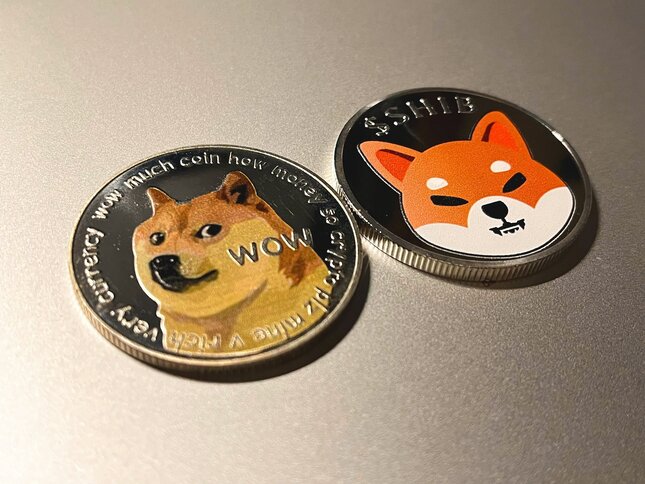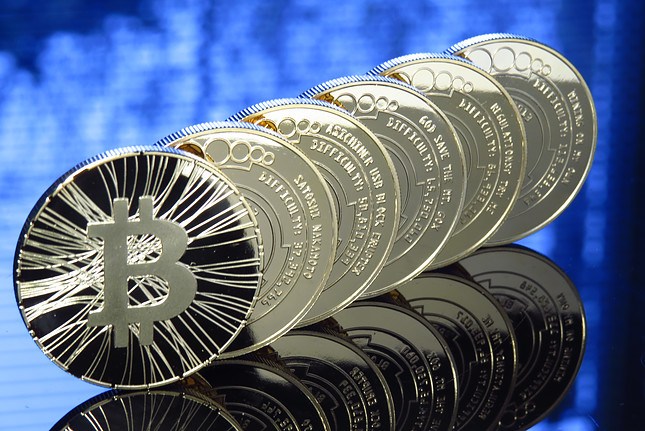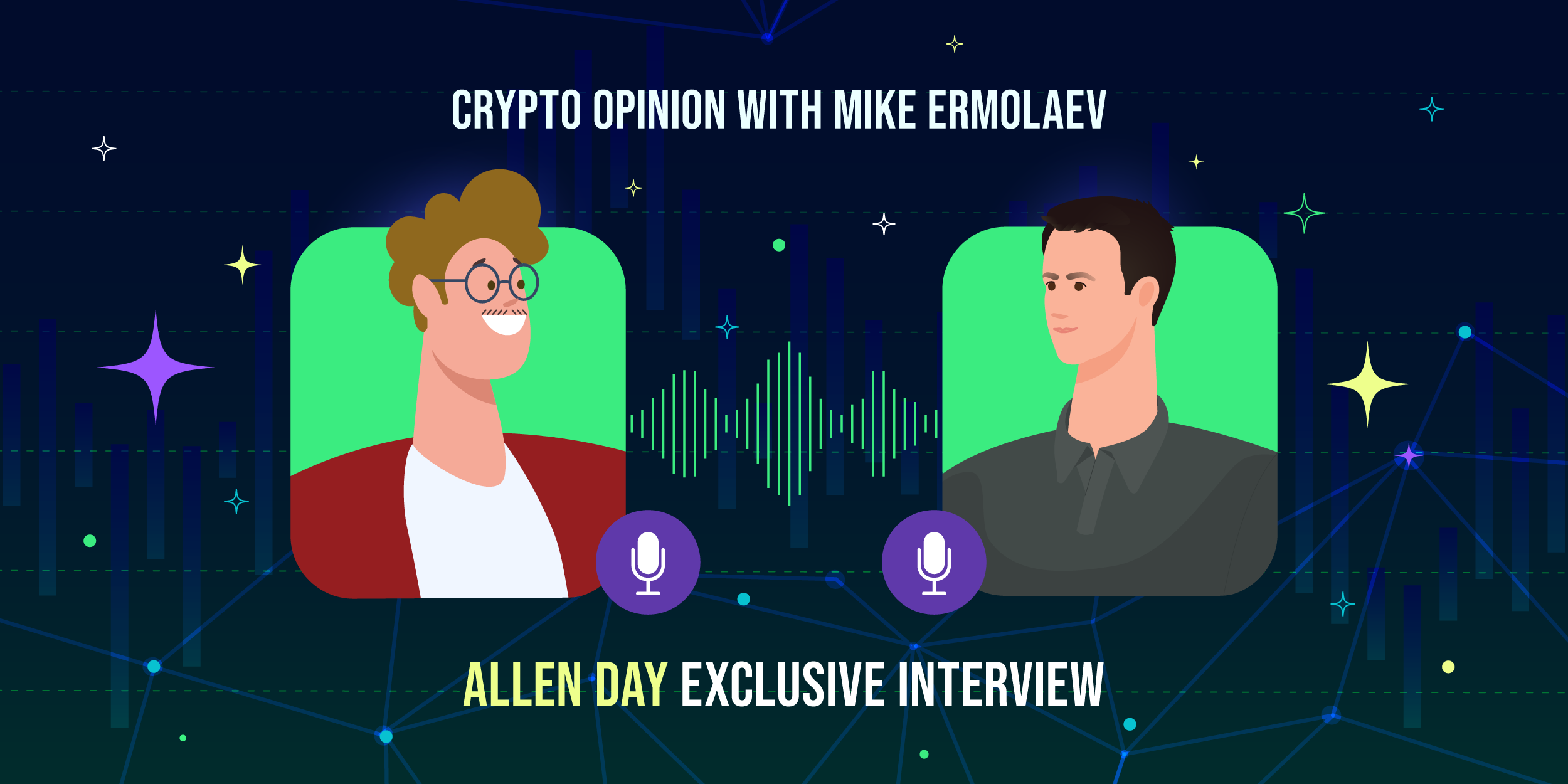For the latest edition of my “Crypto Opinion with Mike Ermolaev” series, I was able to chat with Allen Day, who, in his time with Google, was able to build the company’s web3 development team from the ground up. In our wide-ranging discussion, Allen touched on many pressing issues in the world of web3 and beyond. An advocate for open-source development, leveraging both centralized and decentralized technology to optimize end results, Allen shared his views on the work he did for Google as well as what his next chapter entails.
Allen was an entrepreneur before he joined the Google team and effectively built up the company’s web3 department. His official role at Google was Developer Advocate of web3 technologies, which Allen describes as a collection of technologies bringing digital asset capabilities to the web. Rather than an all-or-nothing entity, Allen likens web3 to more of a dial that can be turned up or down depending on how important digital assets are in a particular application. In financial applications, these assets are front and center, while in social applications, they can take a more backseat role, although users still will need to create a digital identity in the form of a keypair.
The centralization debate
Allen’s work straddled the often fraught line between decentralized and centralized development. For Allen, however, there is a place for both kinds of development which he explained by comparing the situation to the way power laws work in life:
“It's natural that networks built by living things grow according to a power law. This simply means that bigger nodes grow faster, and connected nodes add new connections more quickly.
I like to illustrate this with the example of the octopus nervous system. Each of the arms has some autonomous functions, like grasping and even some light sensing capability - that's how the camouflage works. But to do more complex things, like hiding or hunting, some information needs to get passed to a bundle of nerves in the head.
Bringing this back to Google, it's expected and even a validation of the growth and vitality of web3 and the internet more generally that bigger, more specialized, more well-connected nodes either emerge or integrate into the network.
We're also seeing this happen internally to web3 itself with the concept of layer 2s, layer 3s, and fractal scaling. De facto standardization like EVM and Cosmos, and blockchain integration systems that abstract information to allow information and value to flow more easily like Chainlink and LayerZero, are examples of the power law at work.”
The importance of open-source work
At Google, Allen worked on crypto public datasets and open-source developments. We were able to ask him about the importance of open-source work both in this sector and more broadly. According to Allen, this kind of work and approach facilitates coordination, which in turn, creates the conditions necessary for growth. While private work can produce results, the best way of stimulating long term macro growth is via open source, which is a philosophy supported by Google’s track record of making widely used and open contributions to the internet.
It was through Allen's open-source leadership Google’s web3 strategy was able to take shape and bring together a larger community of people:
“When I wrote my first crypto data blog post on the Google blog, it was effectively permissionless volunteering to lead the creation of open crypto data infrastructure - this is clear in retrospect.
At the time there were only some paid licensed software for performing specific analyses, and block explorers for looking at specific transactions or addresses one by one, but no general purpose datasets for the public to query nor open source software for indexing.
A community of data scientists and data engineers rallied around a project on GitHub called Blockchain-ETL and a community emerged that contributed code, which was operated at Google's expense to build a dataset as a public good. This wasn't charity though; it was good business. All of the pay-it-forward activity led to web3 companies choosing to build on Google, which meant a net positive outcome for everyone.
I feel very fortunate to have been able to have founded a faction within the open data movement, and grateful to Google for creating an environment in which I could found the Google web3 team from the ground up.”
Getting the best out of cloud and blockchain tech
While Google has long been one of the central pieces of the tech industry, it may surprise some to know that internally, there was a lot of interest in what many consider to be disruptive blockchain technology. Allen chalks up the internal interest to the widespread curiosity tech-savvy people have for new technologies. Allen was able to befriend many of the people on the Google team who shared his interest and from there, launch Google’s foray into web3.
However, according to Allen, it was not obvious how to turn that enthusiasm into a business function, and it ended up not being an easy thing to do. There were many potential paths, but, for practical reasons, Allen chose a sales-first approach, given his prior experience as an entrepreneur.
Still, there was a dichotomy between centralized and decentralized camps that had to be overcome in order to get the best out of each. Allen explains:
“Centralizers look at blockchains and see some immature database tech or a public permissionless cloud with almost no capabilities. Maybe it can be put in a box and productized to do something useful. Or maybe it can be interfaced with.
Decentralizers look at the cloud and see a ton of cost-effective high-performance capabilities that are made possible by centralization, vertical integration and hierarchical coordination - but they’re locked behind access control, or have some other quirks that make them hard to integrate with open systems.
It’s inevitable that we see accommodation from both sides, the lines begin to blur, and we see applications that straddle both worlds, taking the best from each. Ultimately customers don’t care how things are built as long as the solution works.”
The Chainlink-Google partnership
A good example of a project that Allen was involved with that showcased how the capabilities of these two types of systems can be harnessed to build a hybrid application is Google’s work with Chainlink oracles to make weather forecasting more reliable.
The project took weather data from the NOAA, which is a US government agency. This agency needs something reliable and proven to be able to move weather data around. They make CSV files available via FTP, which Google then takes and puts in a database called BigQuery. All of this happens on a regular basis, but from NOAA perspective it would be too expensive to put this bulky data on chain, and too exotic and unreliable to have one of the new decentralized filesystems in their supply chain.
This data is invaluable to people operating on all different kinds of levels, for example, financial institutions that speculate on wheat futures using weather data. They make large transactions and have bank accounts, brokers, operating licenses, etc. For this kind of operation, using a cloud provider is not an issue.
Where it becomes more interesting is looking at some of the other parties that use this information. According to Allen, “Let’s say we have some demand for the same data for crop insurance by freehold farmers. The customers don’t match what the bank and broker expect to see. The customer wants a micro product, doesn’t have a bank account, is hard to assess for risk, etc. Each of these customers is small, but there are a lot of them, and with conventional tech, it’s been hard to service them cost-effectively.
Wouldn’t it be great if there was some tech available that could make micro insurance available with very low overhead by automating more of the business process? That’s what we were getting at with cloud integrated smart contracts, and we showed how to do it by using the best of cloud tech and the best of blockchain tech to solve the problem.”
Next chapter
Even though the work Allen did for Google was groundbreaking, he did not actually set out to be there for the long term. His interests lay elsewhere. According to him, “My initial plan was to stay only for a couple of years and then look to found, co-found or join a biotech startup. You see, I was originally hired to do some bio-related work before I discovered it would be better for me and Google to pivot to crypto.
The crypto work I was doing got significant traction, and was fun for a while, so I stuck around. Not everyone gets the chance to create a radical new product area in such an important global tech company so I felt that I couldn’t pass up the opportunity. I got to see and help many of my open-source compatriots start and build companies in the crypto data space, and some of them were also Google customers, so it was synergistic all around and great fun.”
But as things became bigger and more structured, Allen decided it was time for him to move elsewhere and pursue the things he originally set out to do. He is currently involved in web3, data and AI projects, as well as doing mentoring and advising work. Given his success, we are all interested in seeing the kind of impact he will have in this next chapter of his career.
P.S. I initially published this interview at Benzinga, however I can't wait to share this exclusive interview with all FXStreet readers.
Note: All information on this page is subject to change. The use of this website constitutes acceptance of our user agreement. Please read our privacy policy and legal disclaimer. Opinions expressed at FXstreet.com are those of the individual authors and do not necessarily represent the opinion of FXstreet.com or its management. Risk Disclosure: Trading foreign exchange on margin carries a high level of risk, and may not be suitable for all investors. The high degree of leverage can work against you as well as for you. Before deciding to invest in foreign exchange you should carefully consider your investment objectives, level of experience, and risk appetite. The possibility exists that you could sustain a loss of some or all of your initial investment and therefore you should not invest money that you cannot afford to lose. You should be aware of all the risks associated with foreign exchange trading, and seek advice from an independent financial advisor if you have any doubts.
Recommended Content
Editors’ Picks

Bitcoin consolidates after a new all-time high of $99,500
Bitcoin remains strong above $97,700 after reaching a record high of $99,588. At the same time, Ethereum (ETH) edges closer to breaking its weekly resistance, signaling potential gains. Ripple holds steady at a critical support level, hinting at continued upward momentum.

Sandbox hits fresh yearly high as on-chain metrics reach record highs
The Sandbox continued its rally and hit a fresh yearly high of $0.8680 in the early Asian session on Monday after surging over 121% last week. However, at the time of writing, SAND retraces and stabilizes around $0.7600.

Why is Dogecoin price down today?
Dogecoin (DOGE $0.4243) is retreating after reaching its highest levels since May 2021, suggesting a growing profit-taking sentiment among traders following Donald Trump’s win.

Shiba Inu holders withdraw 1.67 trillion SHIB tokens from exchange
Shiba Inu trades slightly higher, around $0.000024, on Thursday after declining more than 5% the previous week. SHIB’s on-chain metrics project a bullish outlook as holders accumulate recent dips, and dormant wallets are on the move, all pointing to a recovery in the cards.

Bitcoin: Rally expected to continue as BTC nears $100K
Bitcoin (BTC) reached a new all-time high of $99,419, just inches away from the $100K milestone and has rallied over 9% so far this week. This bullish momentum was supported by the rising Bitcoin spot Exchange Traded Funds (ETF), which accounted for over $2.8 billion inflow until Thursday. BlackRock and Grayscale’s recent launch of the Bitcoin ETF options also fueled the rally this week.

Best Forex Brokers with Low Spreads
VERIFIED Low spreads are crucial for reducing trading costs. Explore top Forex brokers offering competitive spreads and high leverage. Compare options for EUR/USD, GBP/USD, USD/JPY, and Gold.
